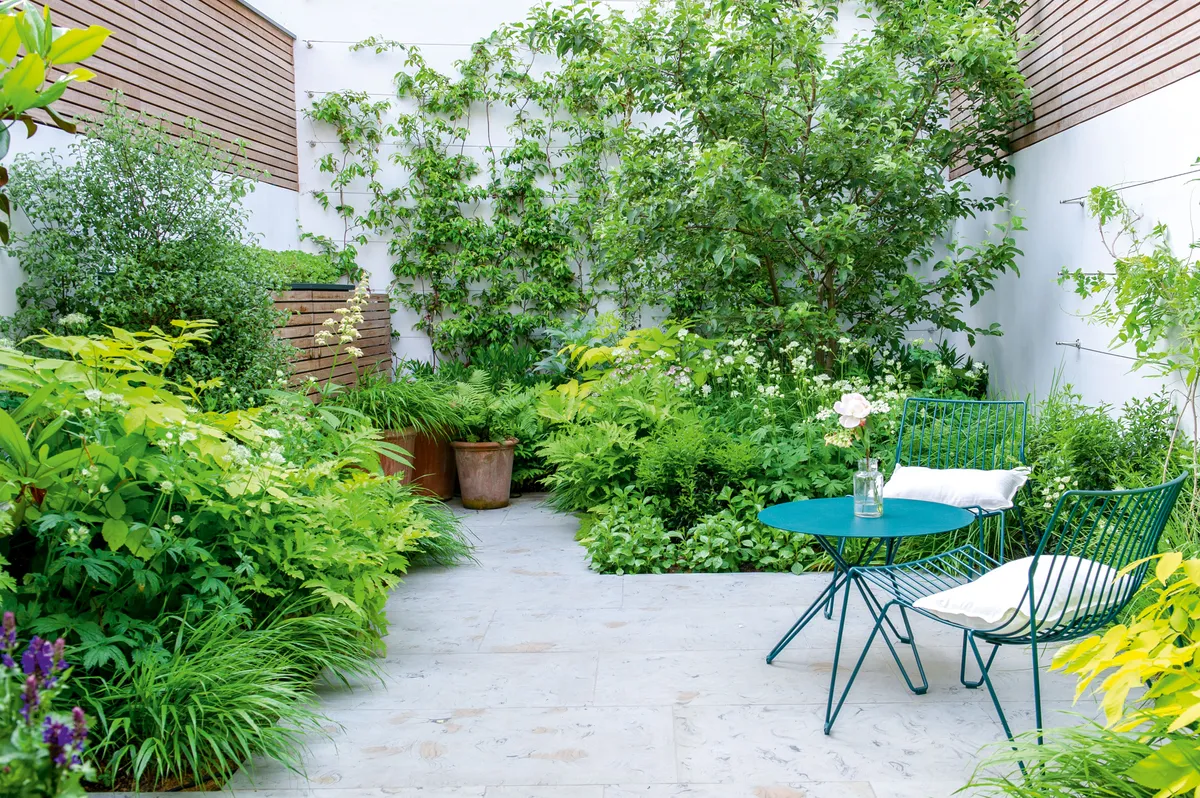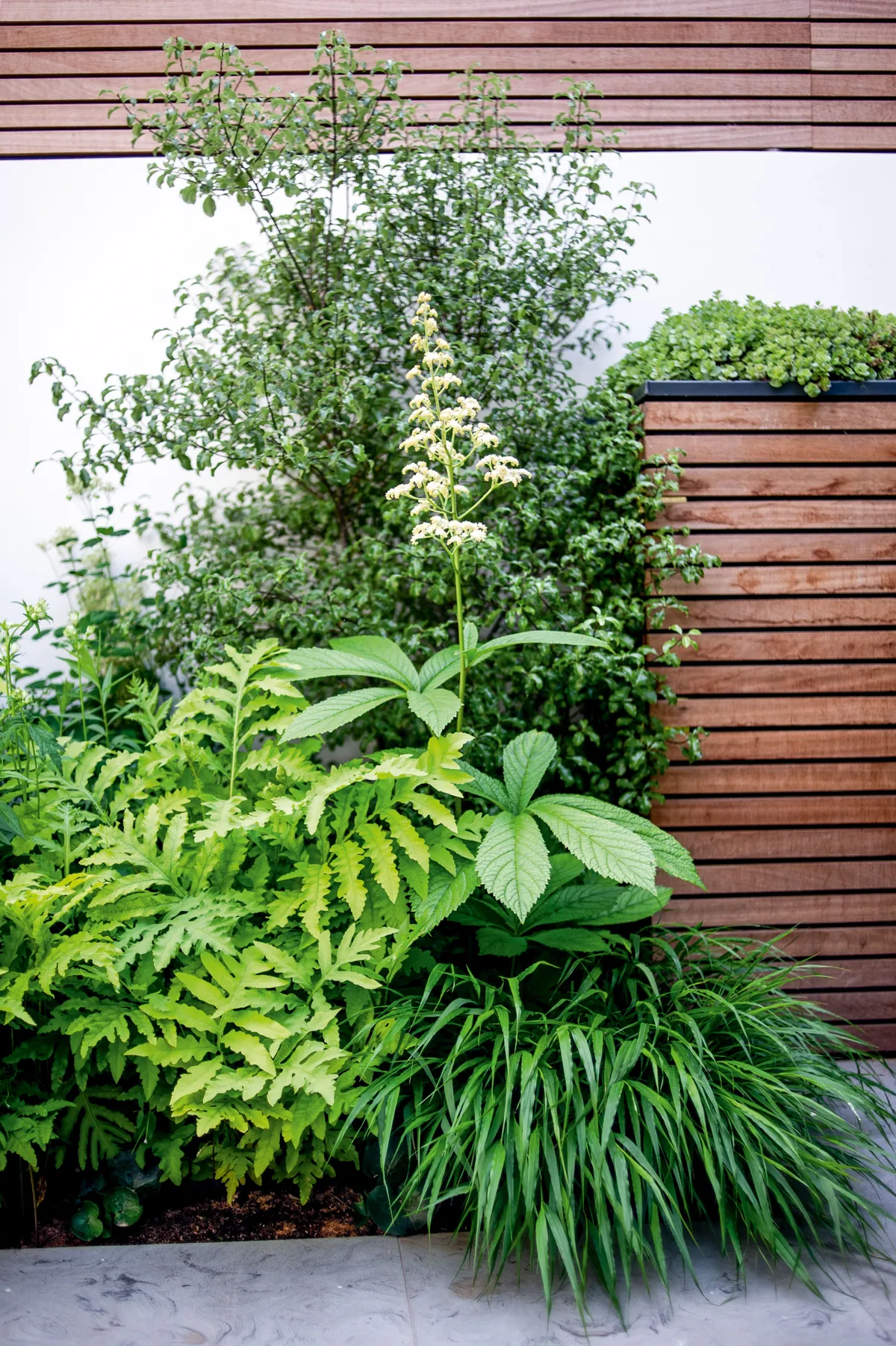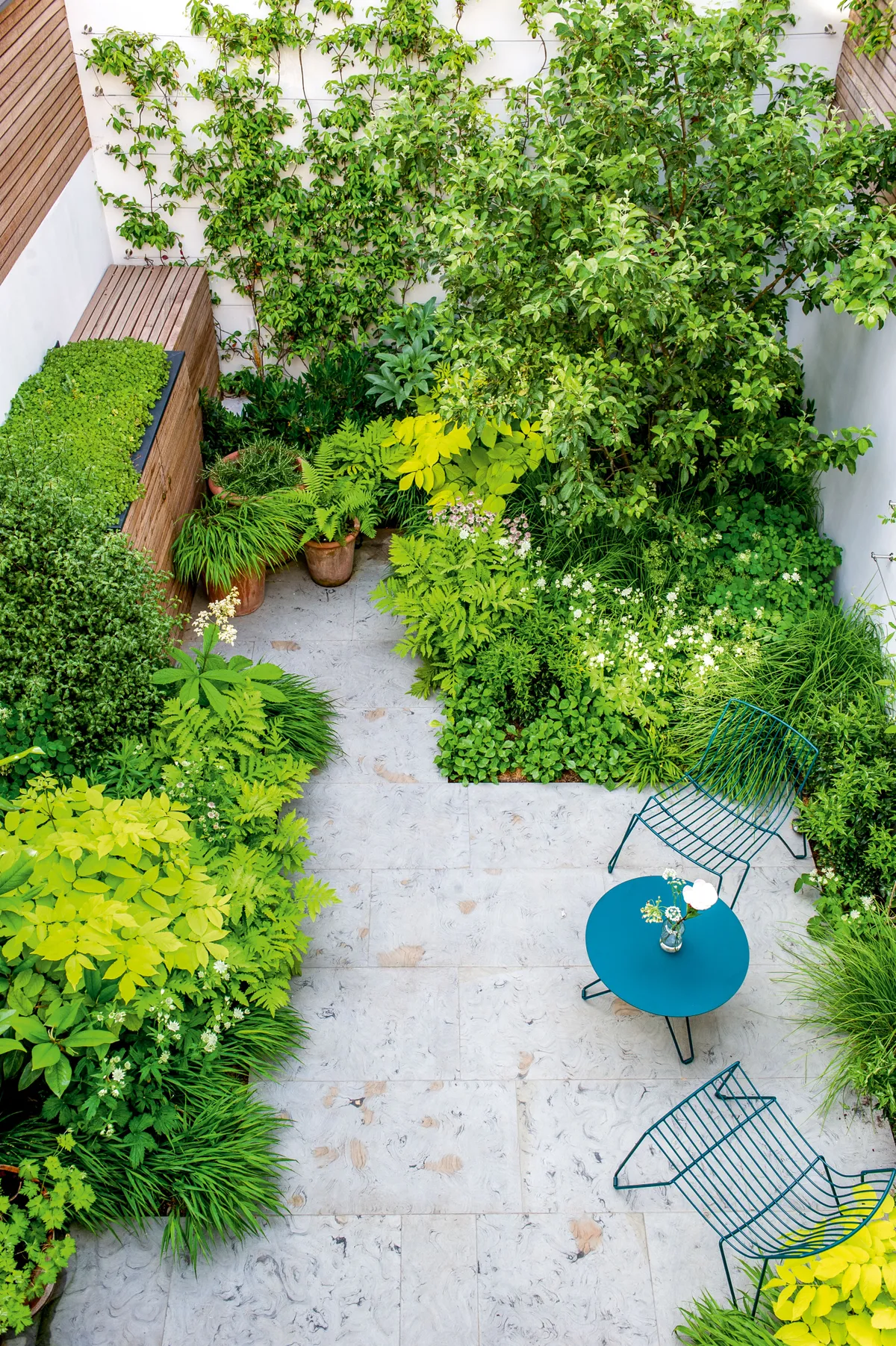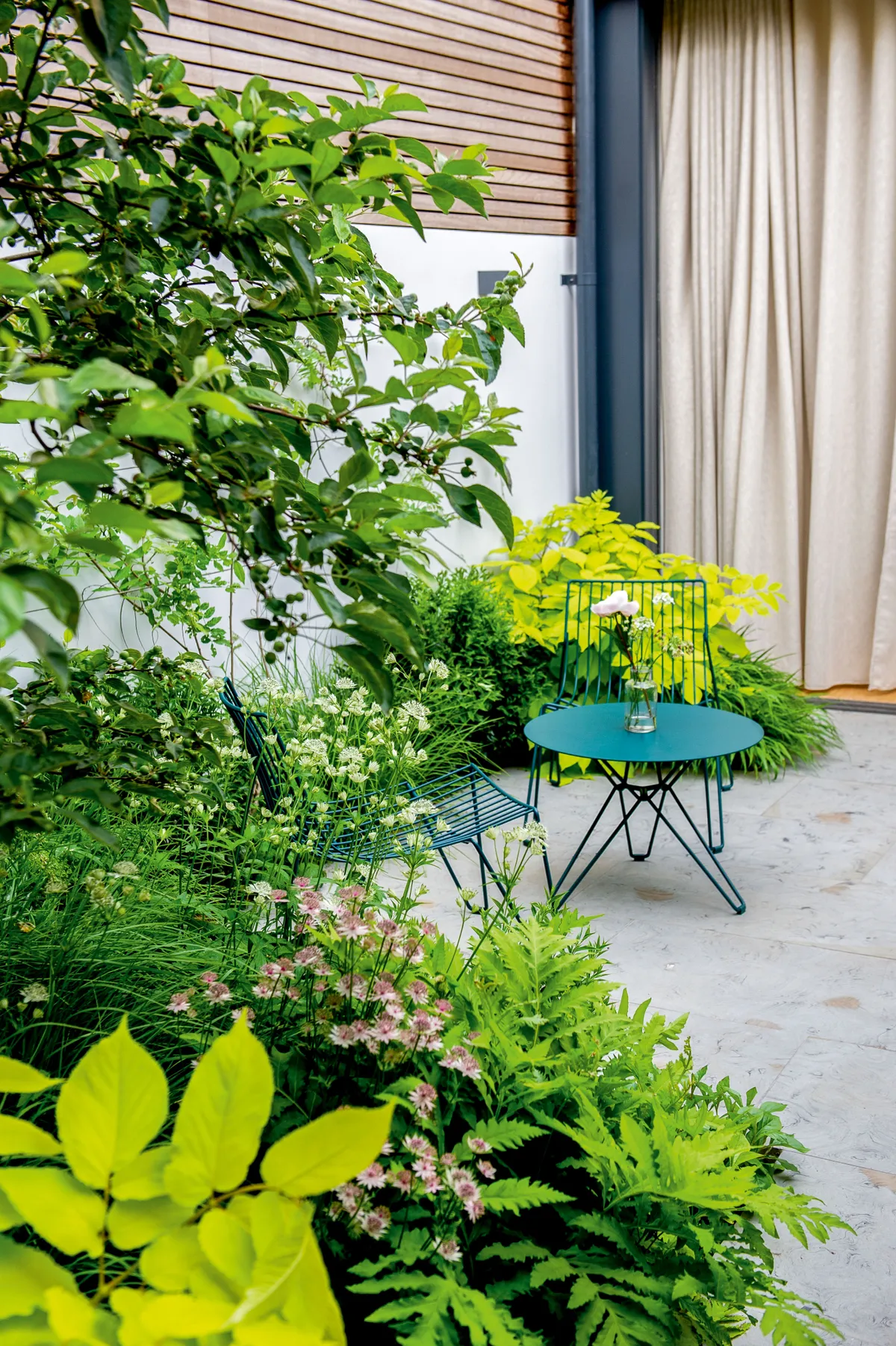High walls and a three-storey building at one end meant that when landscape architect George Cullis first saw this garden, the impression was of being in a deep gorge or chasm. “It was tile-paved with a collection of olive trees and shrubs in pots, all struggling with the shady conditions,” he says. The client, who lives in Singapore for part of the year, wanted something beautiful but low maintenance. This could have meant formal topiary and clipped shrubs but George chose a different route. “The house was being remodelled with a fully glazed rear elevation, allowing views from the front door straight through to the garden,” he says. “There seemed to be the opportunity to bring the garden into the house by creating something as natural and loose as possible, while still bearing in mind the need for minimal maintenance. I didn’t want to make a garden that stood still.” Read more about the garden below.
In brief
What Small courtyard garden with high boundary walls. Where London. Size 6m x 4m. Soil Imported top and sub soil with added drainage. Climate Temperate, north-facing garden. Hardiness zone USDA 9.

High surrounding walls mean this north-facing garden is in shade for much of the day so George had to choose his plants carefully, opting for plants such as ferns, astrantias and Sarcococca confusa that are happy in these conditions.

The planting is richly textural, with the contrasting foliage of Pittosporum tenuifolium, Hakonechloa macra, Onoclea sensibilis and the toothed, pinnate leaves of Rodgersia aesculifolia, with its panicles of creamy flowers adding another element to the mix.

The Malus ‘Evereste’ brings interest and life to the space throughout the year, with soft, pinky-white blossom in spring. This ties in nicely with some rogue pink astrantias, which George has decided to leave.

George divided the space to include seating areas and access to storage at the rear, combined with generous planting. A condenser unit has been cleverly disguised with iroko cladding and a green roof.

Despite the small space, George has used repeat planting to great effect as can be seen here in the golden leaves of Aralia cordata ‘Sun King’ lighting up the space.
Using colour and layers in a small garden
Using a limited colour palette is an excellent way of ensuring cohesion in a small garden. In his small courtyard garden in London, George opted for a predominantly green and soft grey scheme, albeit with a huge amount of variation in the greens, which stretch from lime to apple and viridian.
About 70 per cent of the plants – Magnolia grandiflora ‘Praecox’, Malus ‘Evereste’ and repeated plantings of Aralia cordata ‘Sun King’ for example – were chosen for structure and, of these, around 40 per cent are evergreen, ensuring there is interest year round, vital in a garden as small as this.

Throughout the garden, George has planted in layers. Low-growing plants including Hakonechloa macra and European wild ginger (Asarum europaeum) spill over the edges of the planting beds, softening the overall effect. A mid layer of astrantias and Sesleria autumnalis and taller plants, such as Onoclea sensibilis and Pittosporum tenuifolium, leads the eye upwards to the tree and the climbers. Where there are flowers, George uses them in large splashes, rather than as a lot of smaller pin pricks. “In that way you get a nice sense of rhythm in the space,” he says.
By restricting the hard landscaping materials to soft greys and off whites, George has increased the sense of unity still further. “Simple can often be very effective,” he says. “Make the ground plane interesting so it encourages the eye to travel through the space and to its edges. In this design, I’ve used a beautiful stone, beautifully laid, complemented by the verticals of the tree and climbers to draw the eye up.” He also recommends unifying your boundaries by painting or cladding them in the same materials, and installing good quality wires so that climbers – which will help the garden feel less enclosed – can establish and thrive.
USEFUL INFORMATION Find out more about George’s work at studiocullis.com
